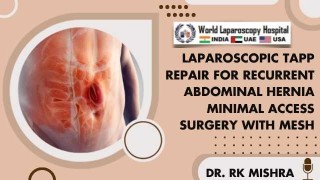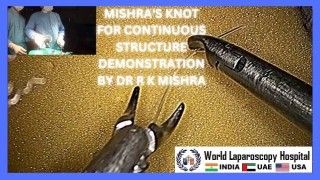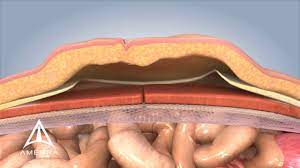Laparoscopic Resolution of Cholecystoduodenal Fistula: A Modern Approach
Add to
Share
26 views
Report
2 days ago
Description
Cholecystoduodenal fistula is a rare but serious complication of long-standing gallstone disease, where an abnormal connection develops between the gallbladder and the duodenum. At World Laparoscopy Hospital (WLH), this complex condition is managed with world-class precision, advanced technology, and unmatched laparoscopic expertise under the guidance of Dr. R. K. Mishra, a global pioneer in minimally invasive surgery. Understanding Cholecystoduodenal Fistula A cholecystoduodenal fistula typically results from chronic inflammation caused by large or impacted gallstones. Over time, the gallbladder wall erodes and adheres to the duodenum, eventually forming a direct communication. Patients may present with: Recurrent abdominal pain Biliary colic Vomiting or gastric outlet obstruction Symptoms of cholangitis Rarely, gallstone ileus Accurate diagnosis often requires high-level imaging, including CT scans, MRCP, and endoscopy—facilities that are readily available at WLH for rapid and precise evaluation. Why World Laparoscopy Hospital Leads in Treatment 1. Expertise in Managing Complex Biliary Pathology WLH is globally recognized for handling rare and difficult cases like cholecystoenteric fistulas. The surgeons here routinely perform advanced hepatobiliary laparoscopic procedures, making the hospital a trusted center for complicated gallbladder diseases. 2. Minimally Invasive Surgical Excellence The preferred treatment is laparoscopic cholecystectomy with fistula repair, a procedure that demands high technical skill. At WLH, surgeons use: 4K laparoscopic imaging Energy sealing devices Modern suturing techniques AI-assisted operative planning These technologies help ensure safe dissection, secure fistula closure, and minimal blood loss. 3. Specialized Approach to Difficult Anatomy Cholecystoduodenal fistulas often create distorted anatomy near the Calot’s triangle. WLH surgeons follow: The Critical View of Safety (CVS) Fundus-first (top-down) cholecystectomy when needed Precision sealing of the fistulous tract Laparoscopic intracorporeal suturing for duodenal repair This reduces conversion rates and improves postoperative recovery. Step-by-Step Laparoscopic Management at WLH Comprehensive Preoperative Assessment Patients undergo detailed imaging and evaluation to determine fistula size, location, and associated complications. Safe Access & Exposure Pneumoperitoneum is created, and careful adhesiolysis is performed around the hepatoduodenal region. Identification of the Fistula Surgeons meticulously dissect the fistulous tract to separate the gallbladder from the duodenum. Cholecystectomy Either conventional or fundus-first technique is used depending on inflammation and tissue planes. Fistula Closure The duodenal defect is repaired using intracorporeal sutures, ensuring airtight closure with minimal risk of leakage. Postoperative Care WLH provides enhanced recovery protocols, early ambulation, and rapid return to daily activities. Training Surgeons to Handle Rare Cases World Laparoscopy Hospital is not only a treatment center but a global training institution. Surgeons from over 108 countries learn advanced techniques for: Enterobiliary fistulas Complex gallbladder surgeries Laparoscopic suturing and knotting Management of dense adhesions Through hands-on training, 3D tutorials, and simulated surgeries, WLH prepares surgeons to confidently manage conditions like cholecystoduodenal fistula in their own practice. Conclusion Cholecystoduodenal fistula is a challenging condition that demands expert handling, advanced imaging, and refined surgical skills. World Laparoscopy Hospital stands at the forefront of this specialized care, offering safe, minimally invasive solutions with exceptional outcomes. With its world-renowned surgeons, cutting-edge technology, and commitment to excellence, WLH remains a global leader in managing complex biliary fistulas through laparoscopic mastery.
Similar Videos






